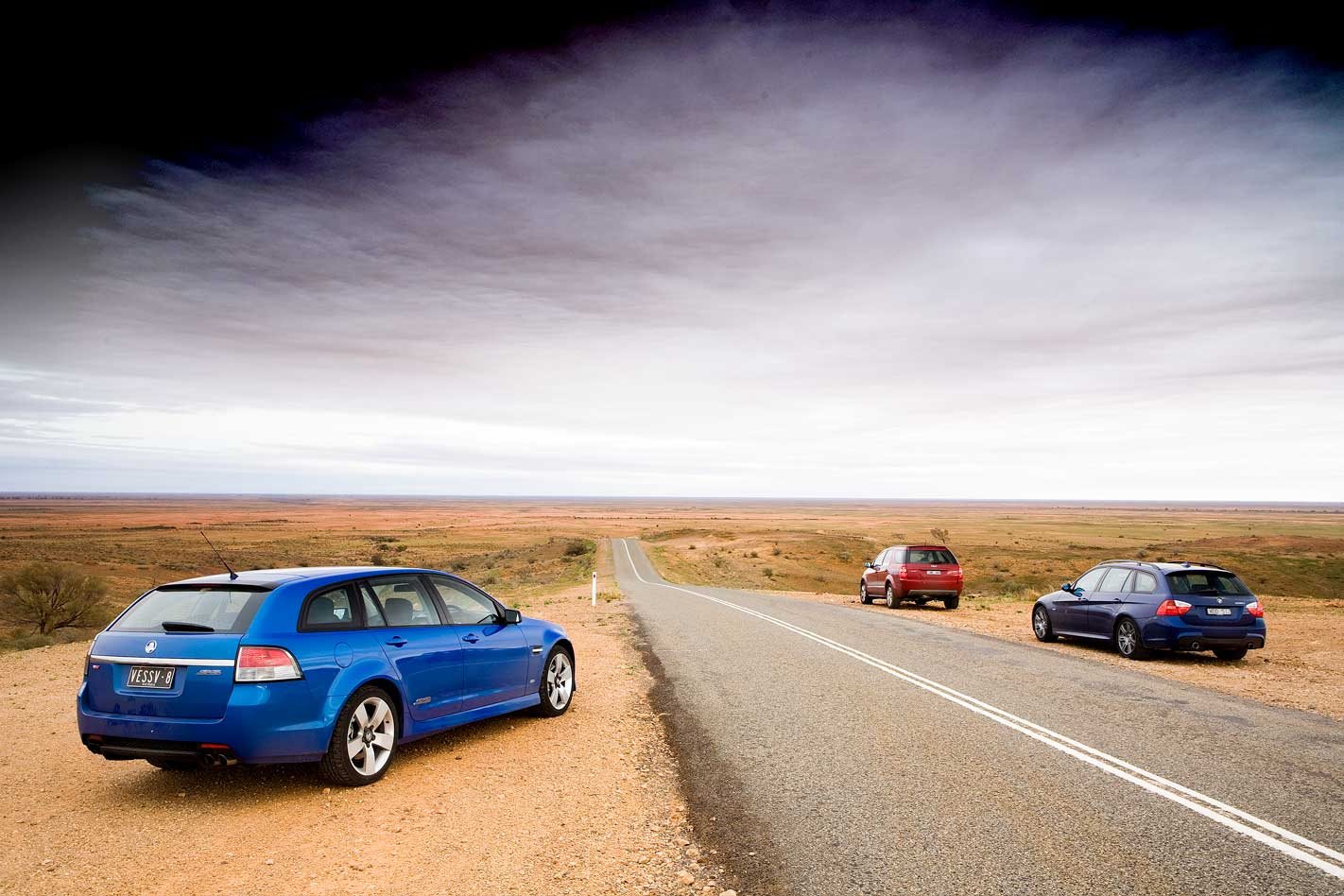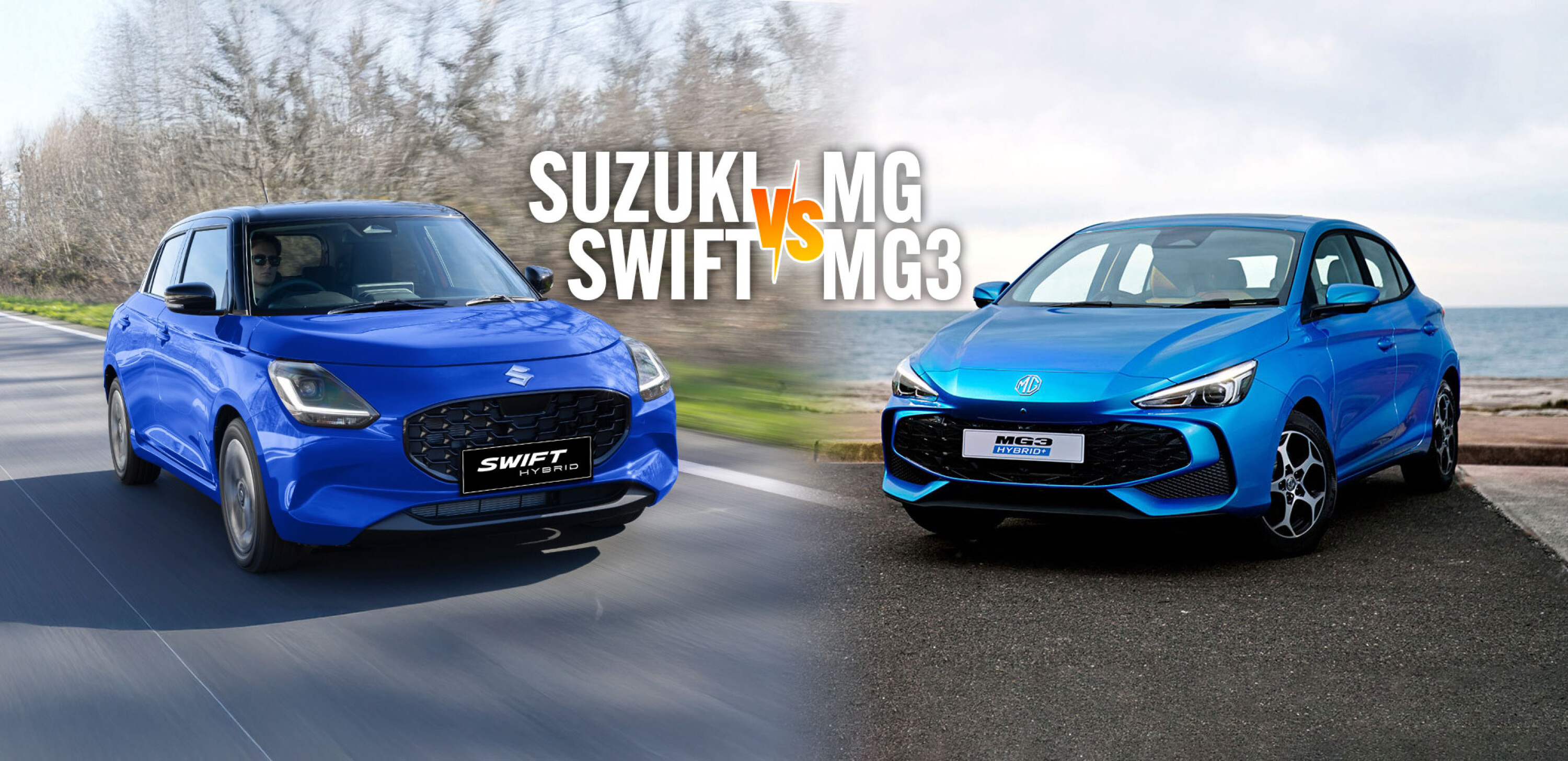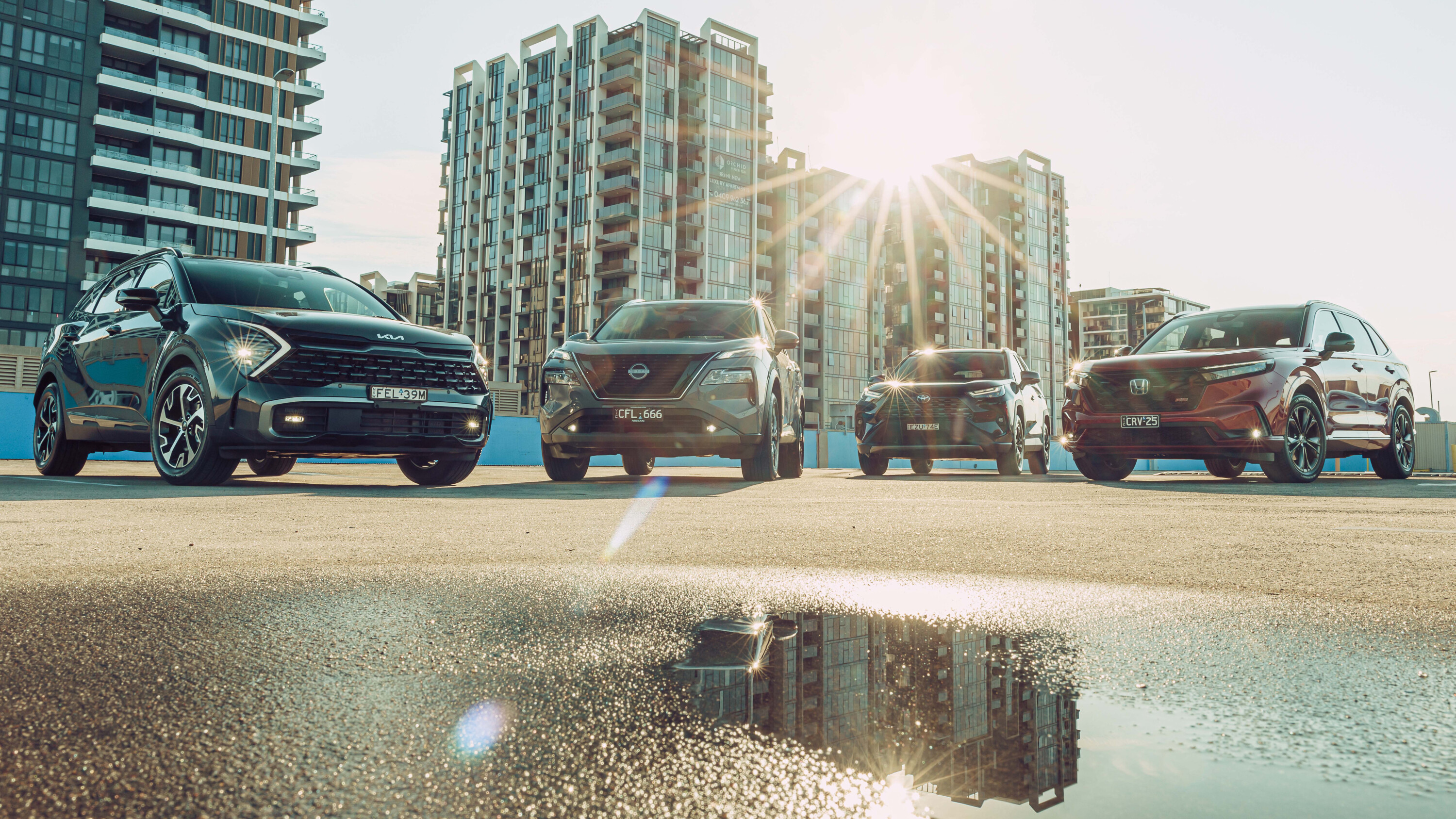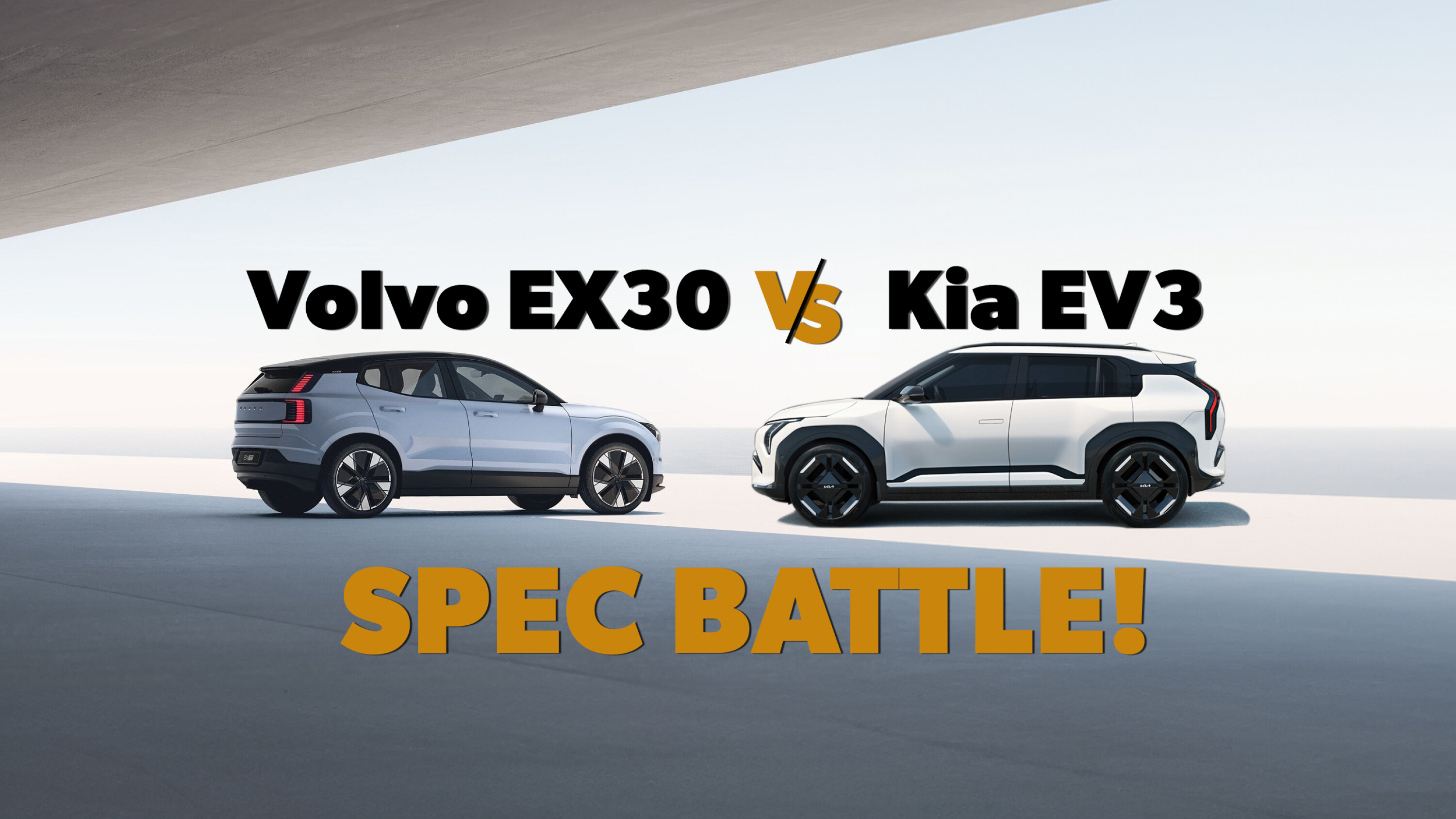TUESDAY EVENING: As I lean against the Boeing’s window, transfixed by the sunset punching through clouds, I ponder what any normal person would in the situation – is the station wagon really dead? I’m flying to Adelaide for a rendezvous with Holden’s new VE Sportwagon and I can’t help but feel that there’s never been a more appropriate moment for a solution to the Toorak Tractor.
This feature was originally published in MOTOR’s September 2008 issue
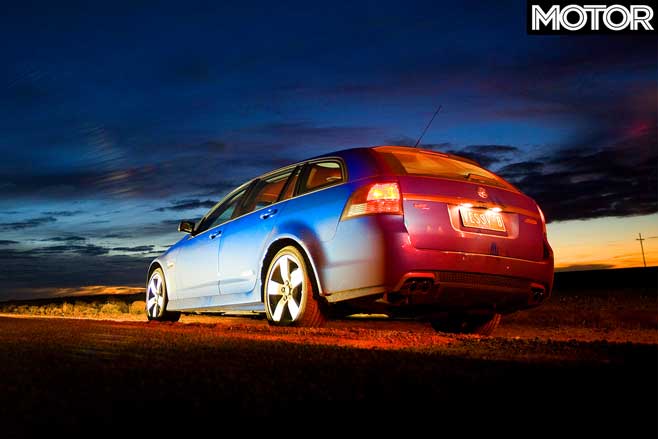
Which brings me back to the Commodore Sportwagon. It’s the anti-dag load-lugger with an emphasis well and truly on ‘sports’, but still packing enough versatility to make the whole exercise worthwhile.
And seeing we’re heading all the way to South Oz to drive it, what’s stopping us attempting a true-blue Aussie road-trip – Adelaide to Sydney, via Broken Hill, in an automatic SS V Sportwagon – and why not bring along two like-minded alternatives?
After some deliberation, we decided on a Ford Territory Turbo and a BMW 335i Touring. Even though neither is an obvious competitor, the Ford is the closest alternative in terms of space and power that also has a toe dipped into the SUV pool, and the BMW is simply our benchmark sports-wagon, even though at $108,600, it’s almost double the price of the Holden ($55,790).

As photographer Wielecki and I wait on the footpath outside Adelaide airport, I spot the projector headlights of our Voodoo-blue SS V Sportwagon in the distance. On approach, Editor AMac in the hot seat, it looks like any other VE, but once the profile comes into view, it appears shorter than I remembered from the Sportwagon’s two previous motor-show outings.
But she’s definitely fit – well-proportioned and nicely toned, without any visual flab. Strangely for Holden’s home-town production base, though, barely anyone takes any notice of her as we perform several laps of the airport marking time before collecting our final pilot, Warren Luff.
Being, in all honesty, a massive car nerd, I notice some minor interior changes in the Sportwagon – stuff like the re-drawn red ancillary dials above the centre air-vents that now show battery voltage, oil temp and oil pressure in actual digits instead of just voltage and oil pressure in useless bar grids. And the shamefully stingy deletion of courtesy lights in the glovebox and centre-console bin. In mean, come on – that’s on par with stealing chocolate from a baby. My 1967 HR Premier mightn’t have much, but at least it has a glovie light.
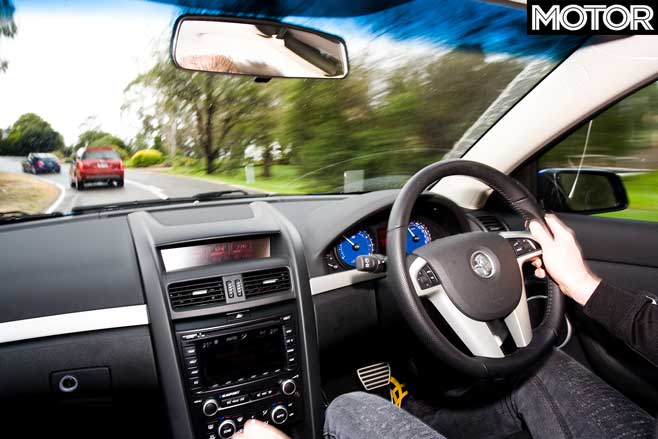
WEDNESDAY: The four of us pack into the Holden and head for Adelaide’s – and South Australia’s – sole BMW dealership to collect the 335i.
As we park nose-in next to the workshop, the BMW mechanics show unexpected interest in the Sportwagon and one comments that he likes how you can hear its V8 burble at idle, “because you can’t hear anything in a 5 Series”. When the 335i Touring emerges, it’s obvious the pre-delivery crew’s minds were elsewhere, too, because the car is filthy and needs fuel.
To save time while the Beemer gets detailed, we head to a nearby Ford dealer for our Territory (or F6X, as it turns out). Compared to the austere minimalism of the German digs, the Ford joint is like a massive step back in time. The service desk is simply someone’s ‘work station’ facing the door, with half a dozen other desks scattered behind it filled with blokes who are all busily working. The ‘customer lounge’ consists of five vinyl-padded seats skirting a narrow waiting area to the left, all facing a large fish tank containing, of all things, a turtle.
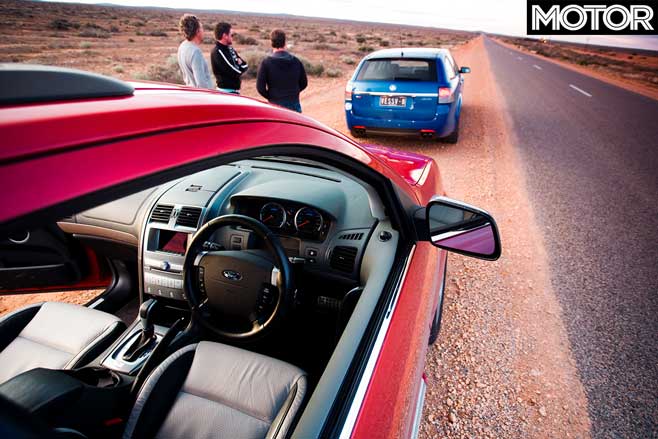
“We’re here to pick up an FPV Territory for MOTOR magazine.”
“Okay, just have a seat while we try and find it”, replies the service bloke, so we spend the next 10 minutes mesmerised, seeing how long the turtle can hold its breath and wondering what does in its spare time. It’s actually a brilliant relaxation tool – visual Valium while you wait – and probably the only area where the Ford outfit manages to one-up the BMW franchise, but they do happen to share one thing in common…
“So, do they normally give them to youse clean and full?” asks a bloke from the workshop, Territory keys in hand.
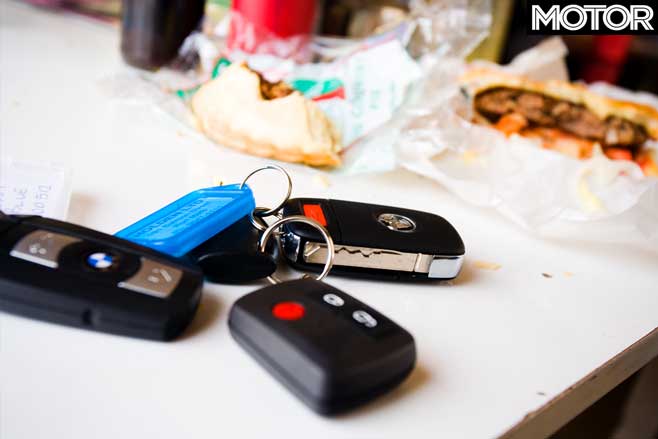
We eventually depart Adelaide in light drizzle and fog, and head east along the brilliant Lobethal Road through instant curves and painted hills to Lobethal. With traffic scarce, we’re instantly into it, and despite the moist road surface, all three cars impress with their wet-weather talent.
You’d expect the all-wheel-drive Territory to nail a wet road, and it does, with great poise and ample grip, even on its un-sporting Goodyear Fortera tyres. But the big surprise is just how quickly you can hustle the Holden and BMW while barely troubling their excellent ESP systems.
Corner-exit power down from both rear drivers is absolutely first-class, and even somewhat similar in feel. The outside rear wheel figures prominently in the balance of each car, but unless they’re actually provoked, oversteer is rarely an issue. When the back ends do start to slide, it’s always a progressive movement and because the communication from the BMW and Holden’s rear suspension is so crisp, it’s confidence-inspiring, too.
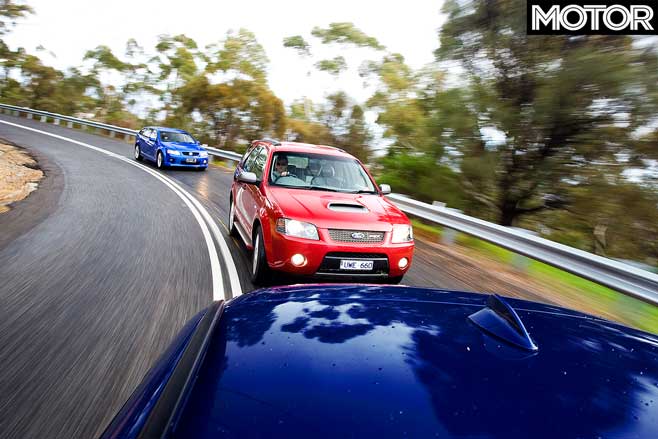
In order to ensure the Sportwagon does what it says on the tin, while still being able to carry a load, Holden has actually made the VE wagon’s suspension stiffer than the sedan’s. In the sports model’s case (SV6, SS, SS V), spring rates have increased by 23 percent and the rear suspension now includes three cross-axis ball-joints instead of two to optimise two-link stiffness.
Despite an 82kg increase in weight for the SS V variant, the Sportwagon’s structure isn’t quite as rigid as the sedan’s – as is the case with a wagon bodystyle – but an additional crossmember that runs across the floorpan just behind the rear seat achieves most of what a rear bulkhead and parcel shelf do.
The result of the suspension revisions is an even better drive than the sedan. Body control feels a bit tighter and the Sportwagon seems to corner slightly flatter, though the difference isn’t huge. What can’t be ignored, though, is the SS V Sportwagon’s ‘intimate’ ride quality. Riding on wheelarch-filling 19s, it jostles over urban scars and feels pretty firm, but unless you’re very old and hyper-critical, you couldn’t call it uncomfortable.
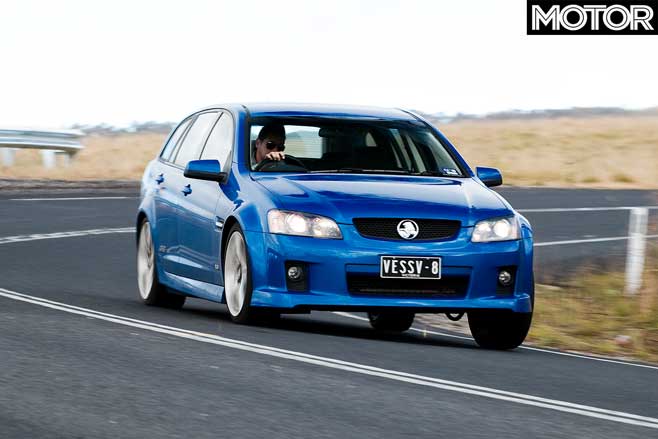
The BMW’s the exact opposite. Despite the test car’s M Sport pack, the 335i’s chassis is actually quite supple and does a respectable job of absorbing bumps in town, even wearing run-flat tyres, but at higher speeds on outback Australian roads, things start to unravel.
As we leave our lunch stop at Gawler and head north on the Barrier Highway, the rumbling road surface introduces some abrupt undulations and the BMW pitches up and down on its recommended 32psi-front/38psi-rear tyre pressures, and at times even flashes its ESP light, even though we’re on a straight road.
The mis-match between the stiffness of the tyre sidewalls and relatively supple suspension means that I can feel the BMW’s vertical motions sloshing the pie, sausage roll and snot block I inhaled for lunch around in my guts. Thankfully, I don’t get car sick.
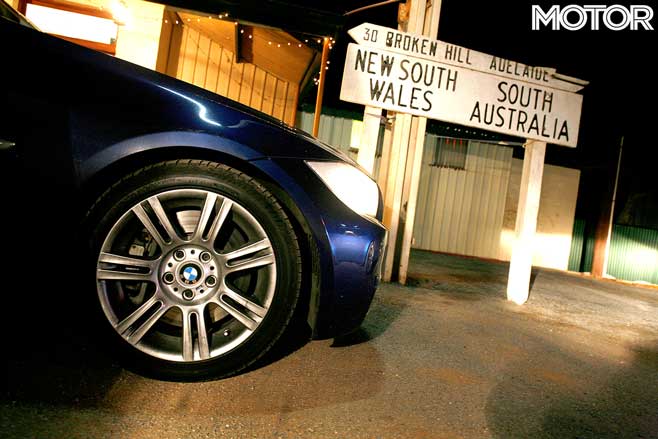
As the day progresses, three very different characters emerge. The Territory, even in stiffened FPV F6X guise, proves a superb open-road cruiser. At speeds that probably shouldn’t be mentioned (and won’t be) out on the reasonably straight, mostly deserted Barrier Highway heading north-east to Broken Hill, Ford’s sportiest SUV is in its element.
Its ride quality is superb, yet for something that weighs 2155kg, it feels light on its feet through the few curves we encounter, and its 270kW turbo six packs big-time overtaking thrust. Great seats, too, and an unrivalled view of the breathtaking shapes and colours on display, but with one limiting factor – fuel consumption.
Our aim is to plan re-fuelling stops around the BP servos that stock 98-octane Ultimate. The boys at the office email suggested stops to AMac’s Blackberry and as we pass the mostly deserted ghost town of Terowie, we ignore its roadside servo.
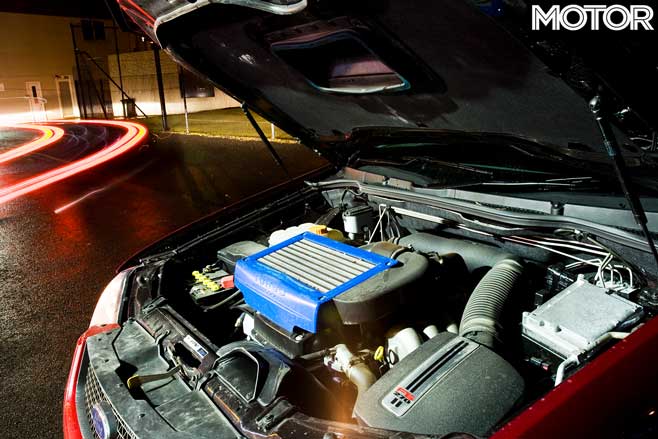
Distance signs indicate that Oodla Wirra – and a BP – is only 32km away, so we keep the right foot buried and even play a few car-against-car overtaking games when the opportunity presents itself, all for the science of road-testing, of course.
As we slow into Oodla Wirra, the servo’s still there, but the BP sign isn’t and the front door is padlocked shut. I’d fuelled and eaten at this very spot in 2006, but judging by the lack of weeds in the gardens and concrete cracks, the joint must have only closed down a week ago.
Feeling slightly distressed, we pull back out onto the highway with no option but to continue. The next fuel stop isn’t until Yunta – 60km away – but Wielecki thinks the servo has closed down there, too, and Broken Hill is another 197km beyond that.
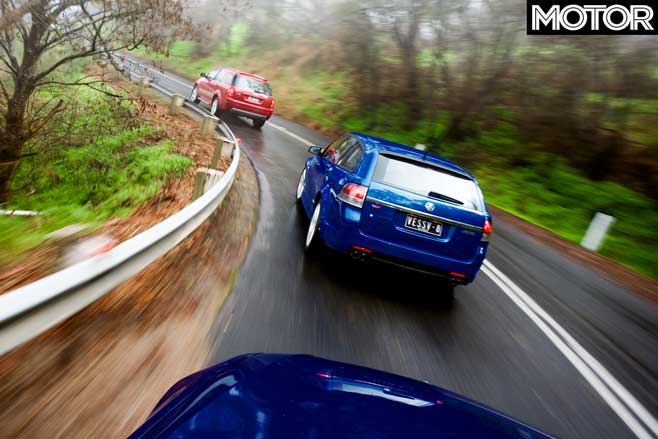
We set off at about 130km/h, but as the Territory’s distance-to-empty estimate starts to plummet like a stone, our speed drops to 100, then 80, then 60. In the middle of nowhere, when you’ve previously been making brilliant time, 60 feels utterly agonising.
As we crawl into Yunta, trip computer reading 17km to empty, I spy a servo with visible life. We juice up all three cars, but it’s the Territory that swallows the most – 74.22 litres brims its 75-litre tank, meaning 20.4L/100km. The Sportwagon swallows 63.55 litres for a 16.3L/100km first leg, while the relatively lightweight 335i (1630kg compared to the Commodore’s 1890) sips exactly 52 litres for a 13.9L/100km average.

Since time waits for no man (or woman), we swap cars and aim for Broken Hill while the pub and grub are both still serving. And we get there only to discover that we’ve timed our arrival with Pamela Anderson’s insertion into the Big Brother house.
By the time she enters, the pub has completely emptied. To pass the time, Wielecki orders one of his famous desserts – three scoops of ice-cream in a bowl, with chocolate topping in a gravy jug on the side. “And what table number are ya?” asks the lone waitress. “Ah, we’re the only people left in the pub love….”
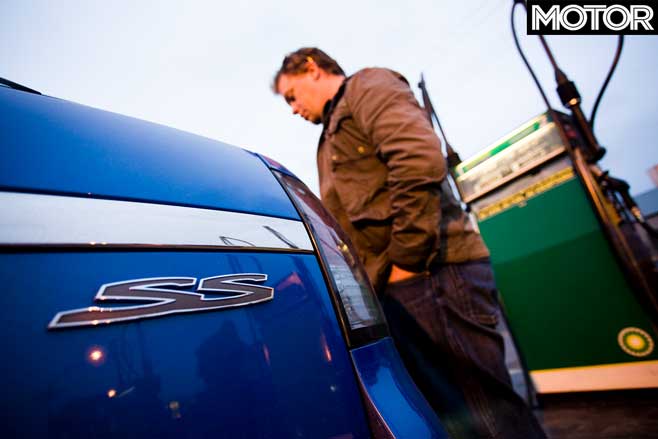
THURSDAY: No trip to Broken Hill is complete without a journey west to Silverton, 23km west – where the township began out here before everyone decided to relocate to where Broken Hill is now, and where Mad Max II was famously filmed.
But it’s the appalling road surface heading to Silverton that attracts masochists like us. After launching over one particularly bad hump in the 335i, I turn to Wielecki and ask him if he felt the back end get air.
“Yeah!” he replies, so we quickly pull over to see how the other cars fare. AMac claims he could see daylight under the Territory’s tyres so we send Luffy out for obligatory airborne shots in all three, only to discover that the BMW is the least dramatic even travelling 20km/h faster than the others, and that putting two large-ish males into the back seat of the Territory doesn’t stop it from flying highest, with its arse way up in the air. It just makes it land harder.
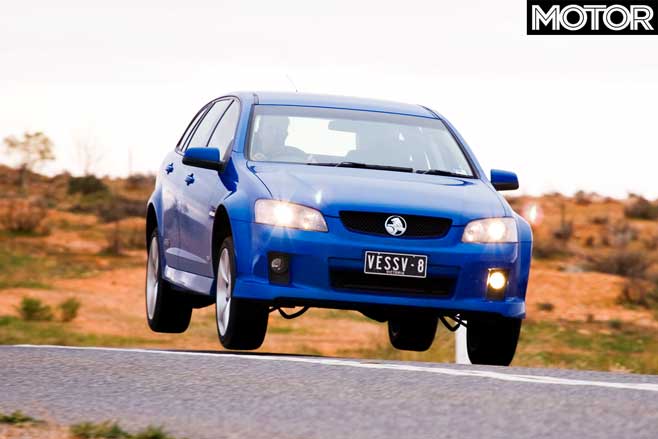
By the time we’ve fiddled around, re-fuelled, and had both lunch and yet another coffee, it’s 1.30pm. And Dubbo’s still 750km away – via the never-ending Barrier Highway to Nyngan, then the Mitchell Highway.
After Wednesday’s ride discomfort in the 335i, we’ve dropped the rear tyres from 38psi down to 32, and the difference is noticeable, but not enough. It’s an exceptionally long-legged car, the 335i Touring, with a tremendous engine and genuine shove-in-the-back accelerative ability, but it never relaxes on these roads.
It feels constantly alive when you’re only trying cruise, and demands firm hands and plenty of concentration. Every time the front tyres react to bumps, the steering-wheel moves and so does the car, creating a frustrating amount of head toss.
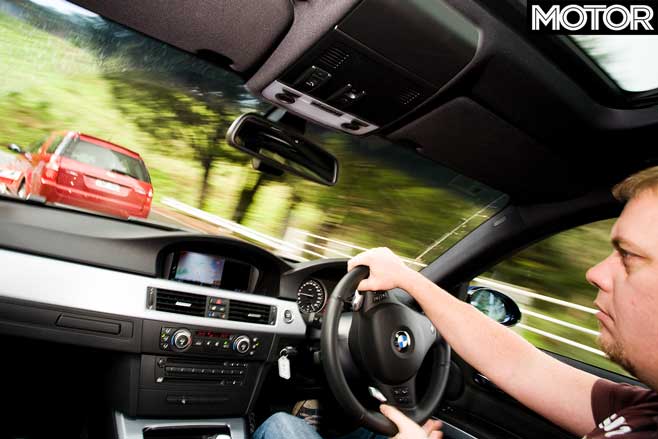
In comparsion, the Sportwagon feels totally at home. There’s more road noise, and you can hear some exhaust-hiss through the rear floor under full throttle that isn’t there in the sedan, but it’s much more relaxing.
As the front wheels react to the road surface, the steering-wheel casually rocks in your hands, body still arrow-straight and head toss non-existent. Even the SS V’s firm ride quality makes total sense out here.
But for the full waterbed experience, the Territory is unmatched. You can feel it struggling against its house-brick aerodynamics at higher speeds and its subsequent thirst is a direct result of that, but arguably no other sports SUV in existence can match its comfort.
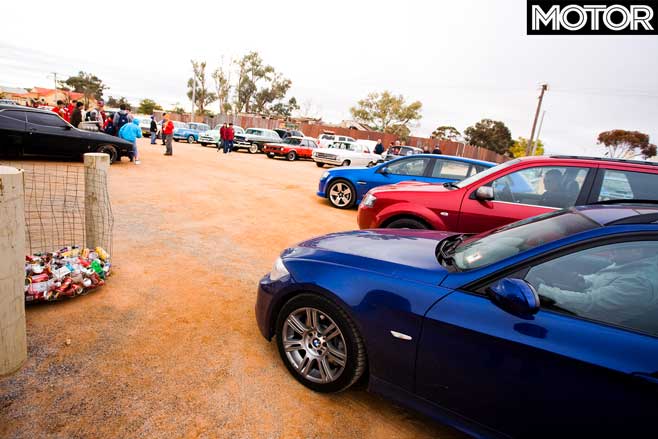
FRIDAY: After a hearty dinner of vegemite and cheese on white toast the previous evening, bought from the servo down the road, and instant coffee for brekky, we leave Dubbo in peak-hour.
The road to nearby Wellington is packed with cars and, after two days of minimal traffic and epic speeds, it’s a weird feeling. And we’re stuck behind a radar copper in an XR6 Turbo doing 102km/h. For an hour and a half. Karma, perhaps?
But it gives me time to reflect on the crawl back to Sydney. Unlike every Holden load-lugger since 1957, the Sportwagon really is ‘sporting’, and in a few months will even become the rather trite-sounding HSV ‘Tourer’.
Indeed, here’s a large, big-power wagon for a third of the price of an E500, that is more likeable and suitable to interstate road trips than a BMW 335i, and a more efficient way to travel than Ford’s benchmark SUV. If the VE Sportwagon is anything to go by, the station wagon can’t be dead. It certainly doesn’t deserve to be.
Fast Facts
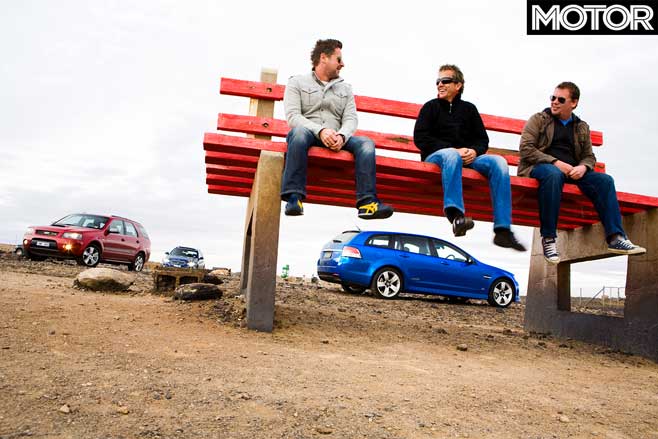
| u00a0 | FPV F6X | BMW 335i Touring | Holden SS V Sportwagon |
| Body | 5-door, 5-seat SUV | 5-door, 5-seat wagon | |
| Drive | all-wheel | rear-wheel | |
| Engine | 3984cc in-line 6, DOHC, 24v, turbo | 2979cc in-line 6, DOHC, 24v, twin-turbo | 5967cc 90-degree V8, OHV, 16v |
| Bore x Stroke | 92.3 x 99.3mm | 84.0 x 89.6mm | 101.6 x 92.0mm |
| Compression | 8.7:1 | 10.2:1 | 10.4:1 |
| Power | 270kW @ 5000rpm | 225kW @ 5800rpm | 270kW @ 5700rpm |
| Torque | 550Nm @ 2000-4250rpm | 400Nm @ 1300rpm | 530Nm @ 4400rpm |
| Power/Weight | 125kW/tonne | 138kW/tonne | 143kW/tonne |
| 0-100km/h | 6.03sec | 5.36sec | 5.46sec |
| 0-400m | 14.09sec @ 165.44km/h | 13.51sec @ 170.65km/h | 13.60sec @ 171.36km/h |
| Transmission | 6-speed automatic | ||
| Weight | 2155kg | 1630kg | 1890kg |
| Suspension (f) | double A-arms, coil springs anti-roll bar | struts, A-arms, anti-roll bar | |
| Suspension (r) | multi-links, coil springs, anti-roll bar | ||
| L/W/h | 4856/1898/1714mm | 4520/1817/1418mm | 4897/1899/1476mm |
| Wheelbase | 2842mm | 2760mm | 2915mm |
| Tracks | 1626mm (f); 1597mm (r) | 1500mm (f); 1513mm (r) | 1602mm (f); 1618mm (r) |
| Steering | power rack-and-pinion | ||
| Brakes (f) | 355mm ventilated discs, four-piston calipers | 348mm ventilated discs, single-piston calipers | 321mm ventilated discs, two-piston calipers |
| Brakes (r) | 328mm ventilated discs, single-piston calipers | 336mm ventilated discs, single-piston calipers | 350mm ventilated discs, single-piston calipers |
| Tyres | Goodyear Fortera HL edition; 235/55 R18 104Vu00a0(f/r) | Bridgestone Potenza RE050A II; 225/45R17 91W (f),u00a0 225/40R17 94W (r) | Bridgestone Potenza RE050A; 245/40R19 98W (f/r) |
| Price | $77,190 | $114,700 | $56,190 |
| Pros | Brilliant ride; crisp steering; powerhouse engine; seats | Outstanding engine; sharp handling; superb efficiency | The best VE variant of all; character; agility and versatility |
| Cons | Mis-matched tyres; ageing styling; high-speed thirst | Unresolved ride; heavy low-speed steering; price | Lacks ride polish; interior not up to exterior; tyre rumble |
| Rating | 4 out of 5 stars | 3.5 out of 5 stars | 3.5 out of 5 stars |

